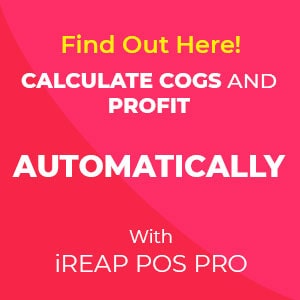
One of the secrets to success in running a business is to determine your selling price right. This time we will learn how to determine the selling price so that the business we are running can reap profits and grow.
Your goal of running a business is definitely to make an income. Of course, in getting income or money in selling products or services, this income must be sufficient to cover the costs incurred, and you must make a profit, and finally you can grow the business.
Our tendency, in general, is that we want to sell goods at high prices and get a very large profit, can this be done? Of course, if you sell luxury goods, this is common, therefore the value of a brand is very important to increase income and profits. If the item you are selling is in the luxury category, congratulations you can “freely” set the price according to your Brand Value. Maybe you can sell 10 or even 100 times the capital or cost of goods that you produce.
Also read: Use the Free Stock and Sales Application for Your Business
But this time we will focus on determining the selling price for goods and services in general. Determining the price of a good or service even though it looks easy, in practice it can be very difficult, because of that we generally have 2 (two) challenges.
- Selling prices are too cheap, with low prices we can sell more. But unfortunately, the more we sell, it does not generate more profit and even loss. This occurs for example, due to a miscalculation of costs incurred
- Selling prices that are too expensive, automatically when we determine the selling price that is too expensive, which is because it is compared to other goods or other sellers. Or the customer does not feel willing to spend as much as the value you are offering compared to the value and benefits it will get. Selling goods that are too expensive can also be because you miscalculated your cost of goods sold or bought goods from a more expensive supplier, so your capital price is higher than your rivals.
How to Calculate the Selling Price?
From the two cases above, it can be seen that determining the selling price is very important and is closely related to the capital price or cost of goods purchased, or the price of raw materials if you carry out production such as selling food which can consist of many raw materials.
Also read: What is Cost of Goods Sold (COGS) and How to Calculate COGS
Here are some ways to calculate the selling price of goods:
-
Markup Pricing
Markup is usually calculated as a percentage of the cost of the product. Cost can be the cost of purchasing goods or services or the cost of producing goods.
The first step in adding a markup percentage to a product’s cost is deciding what% the markup is for your profit. Once you have chosen the markup percentage, determine the cost of the product, to cover not only the cost of the item, but also the overhead if there are production costs, selling costs, general expenses and administrative costs, including allowances for things like damage to goods and lost items.
Selling Price = Cost Price + (Cost Price x % Markup)
The following is an example of the calculation, for example, if you have a meatball noodle restaurant, the cost of one portion is USD 15.00, taking into account all costs such as raw materials (noodles, meatballs, spices), production costs such as employees, gas, electricity, rent, and the risk of goods. unsold / not last. So if you want to get a profit of 25%, it means you’re selling price will be.
Selling Price = 15.00 USD + ( 15.00 USD x 25%)
Selling Price = 18.75 USD
Thus, you get a profit of USD 3.75 per portion, and you just have to multiply it by your sales target per day per month and see if you get enough profit by selling USD 18.75 per portion.
-
Margin Pricing
We often use these words, what is the margin for this item? So it is different from Markup, wherein the markup price we add a percentage to the acquisition price (capital), but at the margin price the percentage is obtained from the Comparison of Selling Price and Cost.
Margin Price is generally used because we already know the approximate selling price we want. Is it because our goods are compared to competitors so that we already have an imagined price? However, it is important to calculate the margin because it compares the selling price that we are trying to determine with the acquisition price so that our price is again not too cheap because of the large amount of competition so that we lose. Or too expensive to compete.
Here’s a formula for how to count Margin Pricing:Margin = (Seling Price – Cost Price) / Selling Price
To make it easier, the example we will use is the same as the calculation example using the Markup Price method. You have determined the price of the meatball noodles that you want to sell is USD 18.75 and the cost is USD 15.00, so the margin you get will be.
Margin = (18.75 USD – 15.00 USD) / 18.75 USD
Margin = 0.2 or 20%
-
Keystone Pricing
This is a pricing method in which merchandise is priced for resale at an amount double the wholesale price or cost of the product. In Indonesia, this method is often found in consignment businesses where the goods sold are deposited in department stores.
The Keystone Price is the same as the markup, but the difference in the markup value is very large, for example, the selling price is 2 times the cost or 100% markup. Even in certain industries, it can be up to 3 times the cost, this is not because you want to get multiple profits, but there are factors such as unsold goods that will be returned, resulting in excess or unsold stock of goods being sold and carrying out stock taking activities is a must. This risk becomes even higher if the items being sold have an age of goods, such as fashion items that are very fashion dependent.
-
Brand owner’s recommended price
If you sell the price of an item that has been recommended by the brand owner or often called the MSRP (Manufacturing Suggested Retail Price), then that doesn’t mean you can take it easy and follow it. But you still must calculate the cost of obtaining these items. Therefore, the calculation method will be very helpful using the margin price method. so that you know your profit, and by selling at a standard price you already know roughly how much the price of the item is being sold by your competitors.
Do all sellers follow the price recommended by the brand owner? Of course, not always, because if a retail business is run efficiently and can save costs, it can automatically sell at a competitive price. However, if your costs are too high and you have to sell above the recommended price, you should be careful because the customer knows about this and can assume you want to make a big profit. This will result in not buying the item and also having an impact on the purchase of other items because it is assumed that you are selling more expensive.
This method of determining the selling price discussed must be treated for every item you sell, and each item can have a different valuation. For example, if you choose the Price Markup method, it does not mean that all your items are selling with a markup of 25%. Maybe there is a higher one because the item is selling well, and no other competitors are selling. There are also items with very small margins because they are available everywhere.
The sales volume factor is of course no less important because sales volume also determines the selling price. You can sell with a smaller margin as long as the number of items sold must be more.
In this way, business sales will increase and profits will also increase. Besides knowing how to calculate the selling price, you also need to know about COGS. Come on, read the next article by clicking this link: Getting to Know COGS: Definition, Purpose, Components, and Examples.
Hope this useful to helps your business grow.




